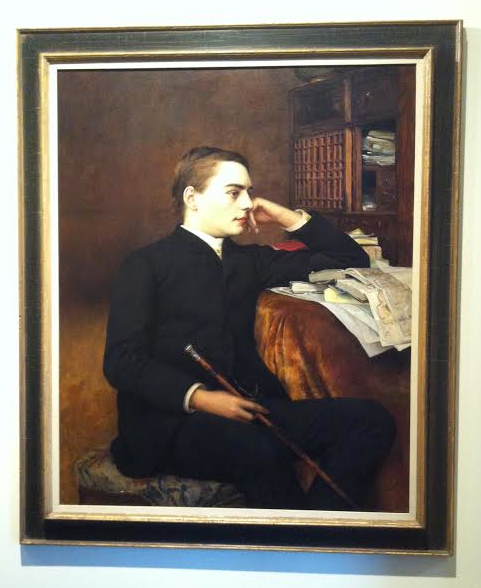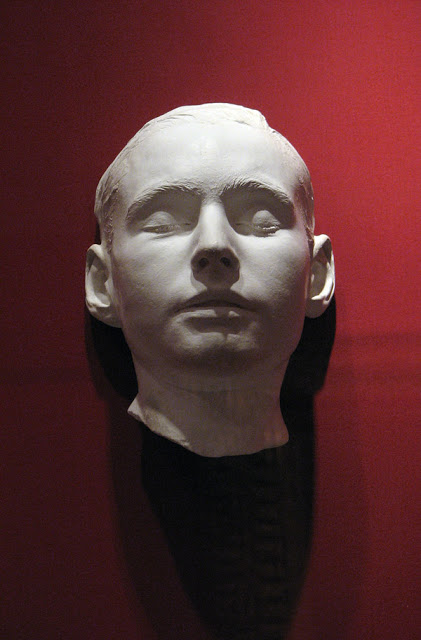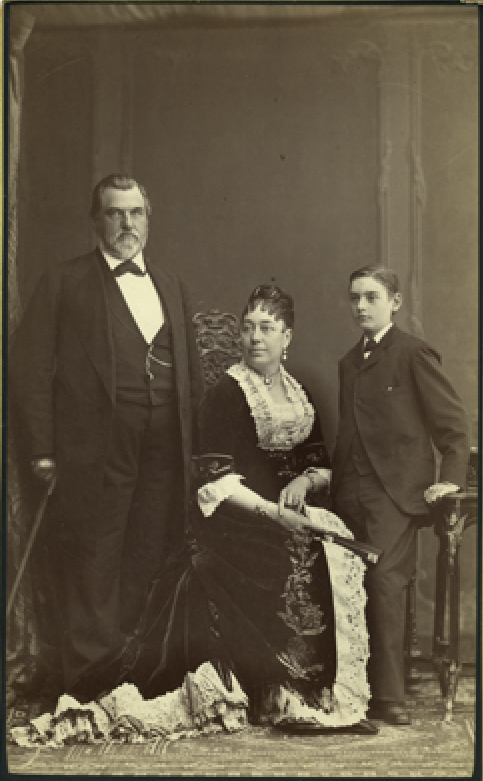Stanford University, one of the world’s prestigious research and teaching institutions in the world, may not have existed if it wasn’t for a tragic loss suffered by one of the nation’s most powerful and ambitious 19th century families. Stanford Historical Society conveys how Jane Stanford and her prominent husband Leland Stanford, both devastated by the untimely death of their only child, established the university and the university museum as a memorial for their beloved son.
Jane Lathrop’s tranquil Victorian upbringing was a far cry from the bereavement she was fated to experience and the relentless determination that sprang from her grief. Jane and her future husband, Leland Stanford, were both born near Albany, New York when there were only 24 states in the union. In 1850, they met, married and soon relocated to Wisconsin, where Leland practiced law. In 1852, after Leland’s office and library were destroyed by a fire, he left to join his brothers in the Sierra Foothills as a merchant. It was the time of the California Gold Rush and Leland prospered selling supplies to miners. Jane moved back to Albany to care for her sick father. She suffered being away from Leland and feared that in her circles, she was deemed as an abandoned woman.

Portrait of Leland Stanford, Jr., 1884 on view at the Cantor Arts Center, Sanford University
(credit: Standford.edu)
In 1855, following the deaths of her father and her father-in-law, Jane left Albany for California and the couple settled in Sacramento. Six years later, the Stanfords acquired great wealth, profiting from the construction of the transcontinental railroad. In 1861, Leland became the president of the Central Pacific Railroad, the Governor of California and later – a U.S. Senator. The couple lavished in their good fortune. Jennie, as she was affectionately called by her husband, became a renowned hostess. The Stanfords owned mansions in Sacramento and San Francisco, farmland and vineyards near Mission San Jose and a country home with a horse farm in their favorite spot – a stock farm named Palo Alto. They seemed to have it all, except for one thing that they truly wanted – a child.
It is likely that Jane had difficulties conceiving and suffered numerous miscarriages. In 1868, close to the age of forty, she gave birth to the couple’s only child, Leland DeWitt Stanford at their Sacramento home. Child mortality was high and it was common for Victorian families to have many children, but the Stanfords had just one and he became the center of their existence. Young Leland lived a privileged childhood, but was known for his good nature and kindness. Bright and inquisitive, the boy had many interests including boats, trains, ponies and traveling, but most of all he loved collecting artifacts of natural science and antiquities. His collection was displayed in their San Francisco home.

Death Mask of Leland Stanford Jr. on view at the Cantor Arts Center, Sanford University
(credit: stanford.edu)
Jane and Leland Sr. helped cultivate their son’s interests by taking him on trips. They traveled to the East Coast, to state capitals, museums and even to various archeological sites in Europe. It was on one of those trips in 1884 that Leland contracted typhoid fever in Italy and died three weeks later at the age of fifteen.
“Our darling boy was taken from us this morning…”
Leland Sr. and Jane Stanford in a telegram to Mrs. Mark Hopkins
March 13, 1884
“I have nothing to live for,” were the words of Leland Stanford Sr. while Jane tried to reach her son’s spirit through séances. Stanford Historical Society describes the sorrow the couple shared after their loss: “Even by Victorian standards, the Stanfords’ mourning was staggering in its public display.” Leland Jr.’s body arrived home after funerary rites in Paris, New York and finally San Francisco. Grief-stricken and left without an heir, his parents dedicated their remaining lives to building a university and a museum on the grounds of their beloved Palo Alto to honor their son’s memory and passions.
The death of Leland Stanford Sr. in 1893 created a financial crisis at the university, but Jane was determined to keep its doors open. During that time, the federal government demanded early payment on 1860 loans for the construction of the Central Pacific Railroad. For six years, she used her own income to support the institution and even traveled to London in attempt to sell her jewelry collection, but found no buyers, as the economy was in decline after the panic of 1893.
“I have the usual weakness of human nature to highly appreciate all tender, kind attentions from the young. I sometimes feel that all I have left to me and all that I can claim in Earth life are the love and prayers of the students of the Stanford University.” — From a letter to the manager of the women’s basketball team, who sent Jane tickets to the team’s first intercollegiate game, April 4, 1896
(credit: janestanford.stanford.edu/biography.html)
In 1898, the United States Supreme Court released Stanford’s assets. Jane focused all her energy and resources on the completion of the university, dedicating a church in memory of her husband and building a new library, gymnasium and chemistry building. New wings were added to the museum, making it the largest privately-owned museum in the country.
In 1903, after the Board of Trustees had taken charge of the university, Jane remained an active participant: first as a board member and later as the president. Until 1920, the university did not charge tuition. In her effort to give equal opportunities to exceptional students regardless of their economic background, Jane started the first scholarship program to provide room and board for students in need. Jane Stanford was driven by the loss of her only son to establish one of the most respected academic institutions in the world that’s still thriving, enriching lives and enlightening the brightest of minds.
“The consecration of great wealth for the education of young men and women. It is a noble thing to leave money to found an institution like Stanford. The son died that the memorial might be made.” (13). — The Pacific, Volume 54, Issues 27-52

 Son’s Memory Lives on through Art and Education
Son’s Memory Lives on through Art and Education



 First the Wealth Gap, Now the U.S. Has a Growing Health Gap
First the Wealth Gap, Now the U.S. Has a Growing Health Gap
 How to Comfort A Dying Loved One
How to Comfort A Dying Loved One
 Our Annual Seven Holiday Gifts for Someone Who Is Grieving, 2024 Edition
Our Annual Seven Holiday Gifts for Someone Who Is Grieving, 2024 Edition














